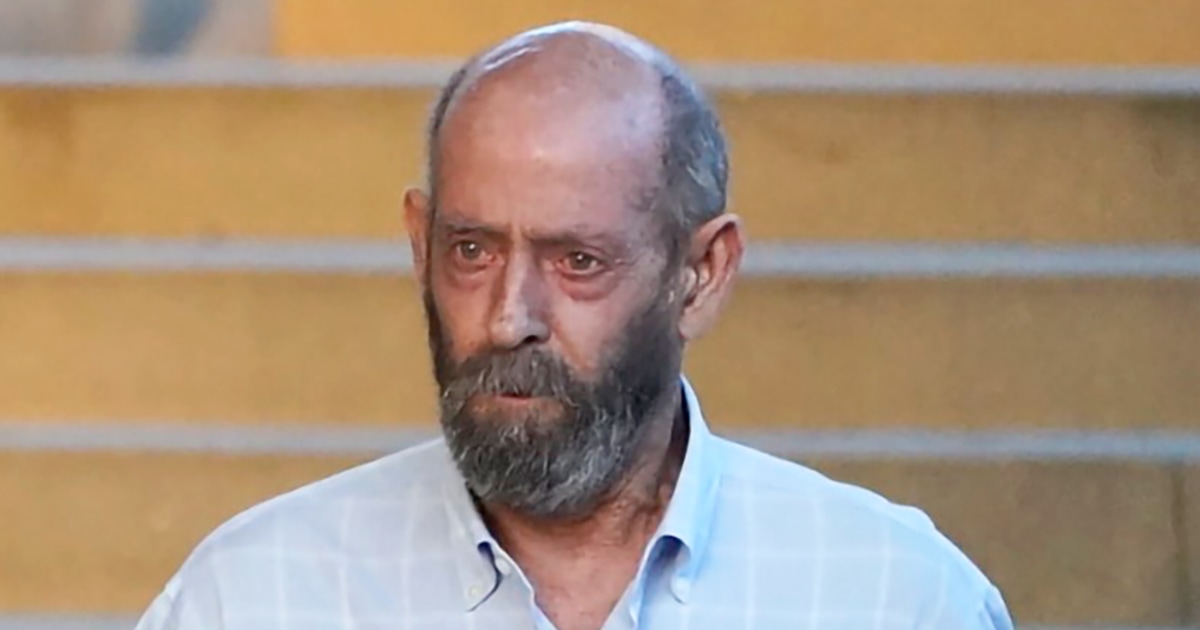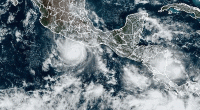
The 75-foot boat was anchored off the Channel Islands, 25 miles south of Santa Barbara, on Sept. 2, 2019, when it caught fire before dawn on the final day of a three-day excursion, sinking less than 100 feet from shore.
The National Transportation Safety Board blamed Boylan for the tragedy, saying his failure to post a roving night watchman allowed the fire to quickly spread undetected, trapping the 33 passengers and one crew member below.
Those on board included a new deckhand who’d landed her dream job and an environmental scientist who did research in Antarctica, along with a globe-trotting couple and a Singaporean data scientist.
Susana Solano Rosas lost her three daughters Angela, Evan and Nicole Quitasol, who were onboard the Conception with their father, Michael Quitasol, and his wife, Fernisa Sison. Solano Rosas waited with other relatives for jurors to be chosen.
“We’ve been waiting for this for a long time,” she said. “We want to start some healing.”
U.S. District Judge George Wu on Oct. 12 granted Boylan’s request to bar most if not all references to “victims” — which the captain’s attorneys say is a prejudicial term that jeopardizes his right to a fair trial. It was the latest setback for the prosecution.
A grand jury in 2020 initially indicted Boylan on 34 counts of a pre-Civil War statute colloquially known as “seaman’s manslaughter” that was designed to hold steamboat captains and crew responsible for maritime disasters. Each count carries up to 10 years in prison in a conviction, for a total of 340 years.
Defense lawyers sought to dismiss those charges, arguing the deaths were the result of a single incident and not separate crimes. Prosecutors got a superseding indictment charging Boylan with only one count.
Then in 2022, Wu ruled the superseding indictment failed to specify that Boylan acted with gross negligence, calling that a required element to prove the crime of seaman’s manslaughter. He dismissed that indictment, forcing prosecutors to go before a grand jury again.
Boylan is now charged with one count of misconduct or neglect of ship officer. The single count means he faces only 10 years behind bars if convicted.
He has pleaded not guilty and denied any wrongdoing. His federal public defenders did not return The Associated Press’ repeated requests for comment, and a spokesperson for the U.S. Attorney’s Office declined to comment.
Some of the dead were wearing shoes, prompting investigators to believe they were awake and trying to escape. Both exits from the below-deck bunkroom were blocked by flames. Coroner’s reports list smoke inhalation as the cause of death.
What exactly started the fire remains unknown. Early official scrutiny appeared to focus on a spot where divers plugged in phones and other electronics. But a Los Angeles Times story, citing a confidential report by the Bureau of Alcohol, Tobacco, Firearms and Explosives, said the blaze began in a plastic trash can on the main deck. An official cause remains undetermined.
Boylan and four crew members sleeping in the upper deck told investigators they tried to save the others but were ultimately forced to jump overboard to survive. Boylan made a mayday call before abandoning ship.
Dozens of family members have since formed “Advocacy34” to push for strengthened boating regulations. While seeking answers, they’ve comforted each other during loved ones’ missed birthdays and mourned each anniversary.
“We have no idea when we’ll get those answers, or if we ever will,” McIlvain said.
The NTSB faulted the Coast Guard for not enforcing that requirement and recommended it develop a program to ensure boats with overnight passengers have a watchman.
Victims’ families have sued the Coast Guard in one of several ongoing civil suits.
At the time of the fire, no owner, operator or charterer had been cited or fined for failure to post a roving patrol since 1991, Coast Guard records showed.
The Coast Guard has since enacted new, congressionally mandated regulations regarding fire detection systems, extinguishers, escape routes and other safety measures.
Three days after the inferno, Truth Aquatics Inc., which belongs to the Conception’s owners, Glen and Dana Fritzler, filed a lawsuit in U.S. District Court in Los Angeles under a pre-Civil War provision of maritime law that allows it to limit its liability to the remains of the boat, which was a total loss. The time-tested legal maneuver has been successfully employed by the owners of the Titanic and other vessels, and requires the Fritzlers show they were not at fault.
The couple’s attorneys did not respond to requests for comment.
In response to the families’ outcry, federal lawmakers last year updated the Limitation of Liability Act of 1851 so owners could be held liable for damages regardless of the boat’s value afterward. The law is not retroactive, however, and will not apply in the Conception fire.
Source: | This article originally belongs to Nbcnews.com










